Governance
Transmodel has been developed under the aegis of CEN (Comité Européen de Normalisation).
The European Committee for Standardization is one of three European Standardization Organizations (together with CENELEC and ETSI) that have been officially recognized by the European Union and by the European Free Trade Association (EFTA) as being responsible for developing and defining voluntary standards at European level (more here).
The work organisation in CEN is summarised in this figure: Technical Committees (TCs) split into WGs (Working Groups)
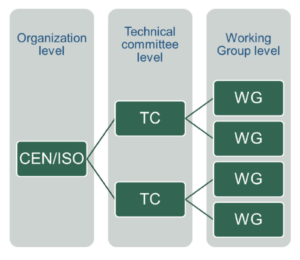
Transmodel is developed by TC 278 WG3 (Public Transport) as shown in the following picture:
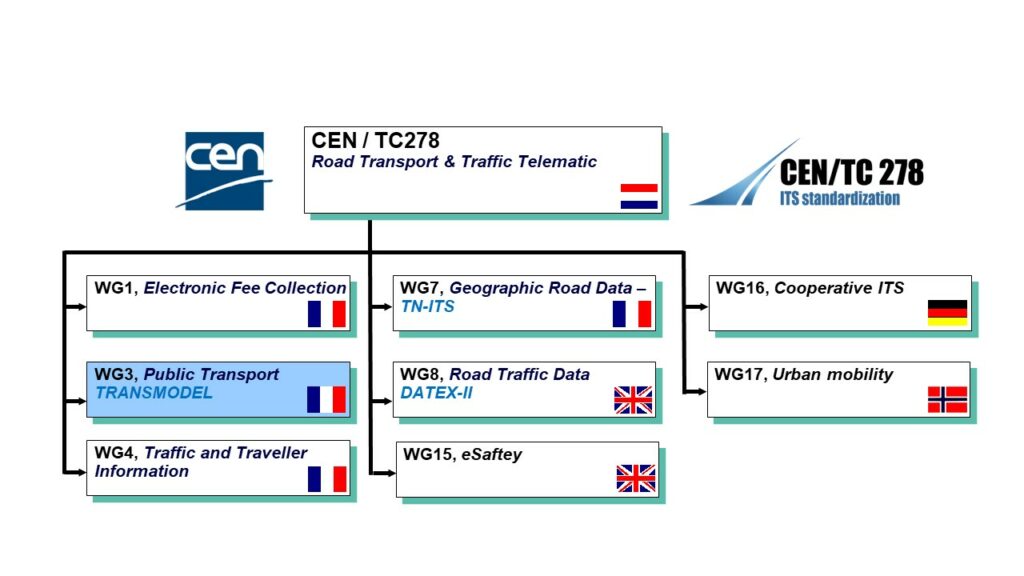
TC 278 WG3 splits on its turn into Sub-Groups (SGs) as shown in the picture below:
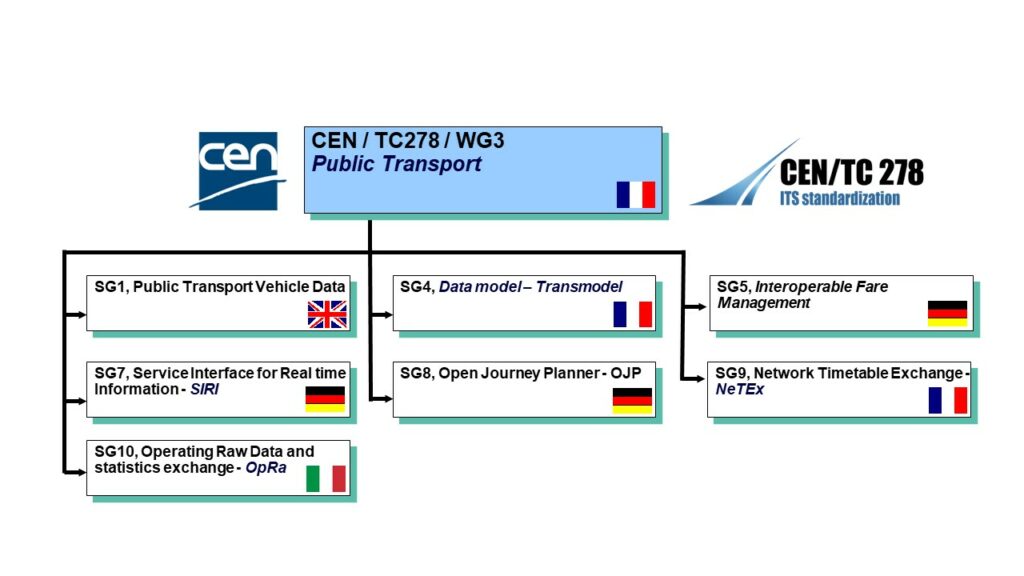
Transmodel is used for many years to specify a number of CEN data exchange formats, such as CEN SIRI (for real time data) and CEN NeTEx, (for planned data), OpRa (for operational raw data).
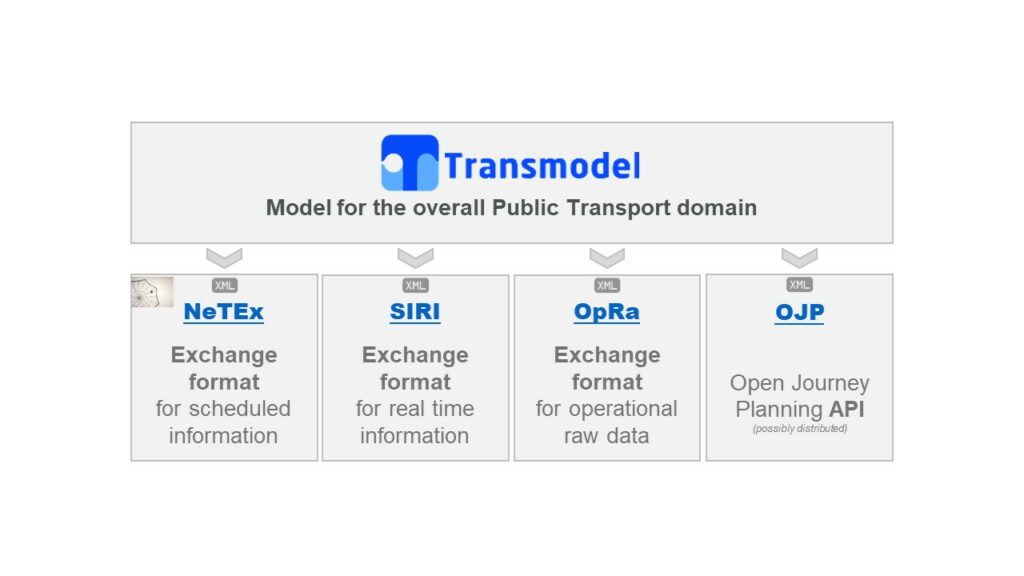
The CEN Transmodel standard is a conceptual model which provides terminology and data structures (i.e. concepts, their characteristics and links between concepts) for a wide set of functional areas, and which can be used to design data bases and/or data exchange formats. It is published under the reference number EN12896, as series from Part 1 to 10. Transmodel has been used as well to rationalise national standards to allow for harmonisation and interoperability.
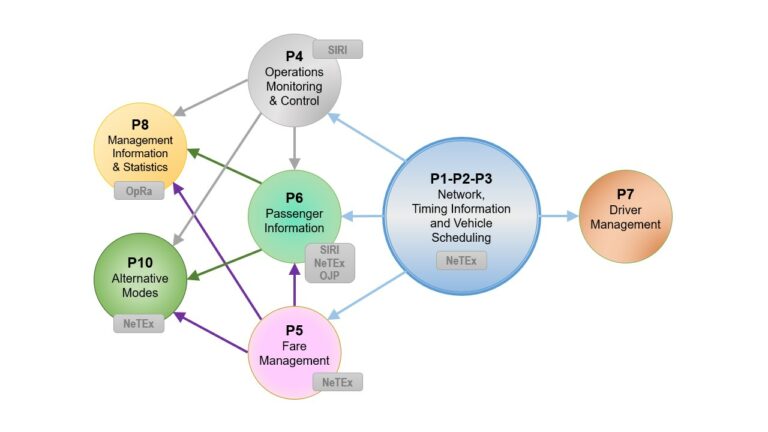
How are European Standards developed?
Although technically anyone can propose work items that will result in a European Standard, at CEN and CENELEC the work is usually channeled by the members of the CEN National Standardization Bodies and the CENELEC National Committees. In some cases, the request comes from the European Commission or from other stakeholders.
If enough CEN and/or CENELEC members are willing to be involved in the development process, the work is then assigned to a CEN and/or CENELEC Technical Committee (TC) in the field concerned. At the same time, “standstill” is enforced on all national work surrounding the same topic. Once the Technical Committee is established, mirror committees of stakeholders at national level decide on the national contributions regarding the development of the standard. In addition to the CEN and/or CENELEC members, Technical Committees also include observers, such as ISO/IEC members, European Commission/EFTA, external European industry associations and other affiliated bodies.
Once the proposal for a standard has been evaluated and approved, it goes to the drafting stage, which is based on consensus-building. When the draft standard is finalized, it goes up to public enquiry open to all interested parties. When the enquiry is over, the votes and comments on the standard are evaluated and depending on the result, the draft standard is either published or additionally worked upon and subsequently submitted to formal vote. Furthermore, European Standards are also developed to ease compliance with European rules and regulations such as EU legislation. Through Regulation (EU) No 1025/2012, the three European Standardisation Organisations (CEN, CENELEC and ETSI) may receive a request to produce European harmonised standards in support of EU legislation and policies.
Read more: https://www.cencenelec.eu/european-standardization/european-standards/
Overview of the transmodel based standards and relevant CEN working groups
CEN, Europe’s standardisation body, divides its work into committees covering different aspects of industry and technology, with a well-defined process and documentation formats.
The standards are made available by the national standardisation bodies, following their process and using the corresponding identification numbers of each document:
The Transmodel standard (EN12896) is formally produced by Technical Committee 278 (TC278), Working Group 3 (WG3), Sub Group 4 (SG4). Other TC278 WG3 sub groups handle the related standards:
- SIRI: Service Interface for Real-time Information, CEN EN/TS 15531 1-7 (SG7)
- NeTEx: Network, Timetables and Fare Exchange, CEN TS 16614-1 to 6 (SG9)
- OJP: Open API for Distributed Journey Planning, CEN TS 17118 (SG8)
- OpRa: Operational Raw Data and Statistics, CEN TR 17370 (SG10). Under development is the corresponding TS.
- Data Communication on Vehicles, CEN TS 13149 7-11 (SG1)
